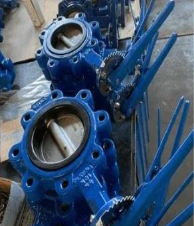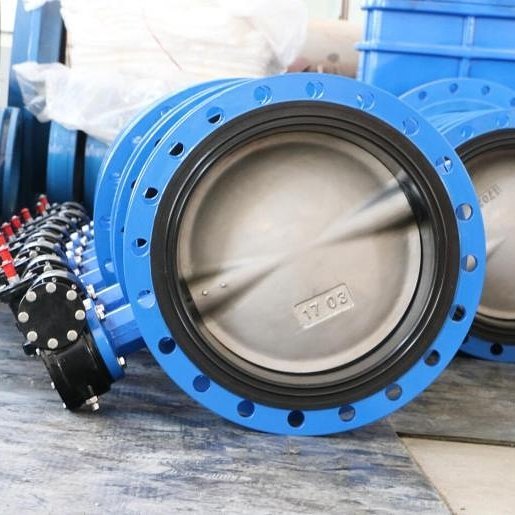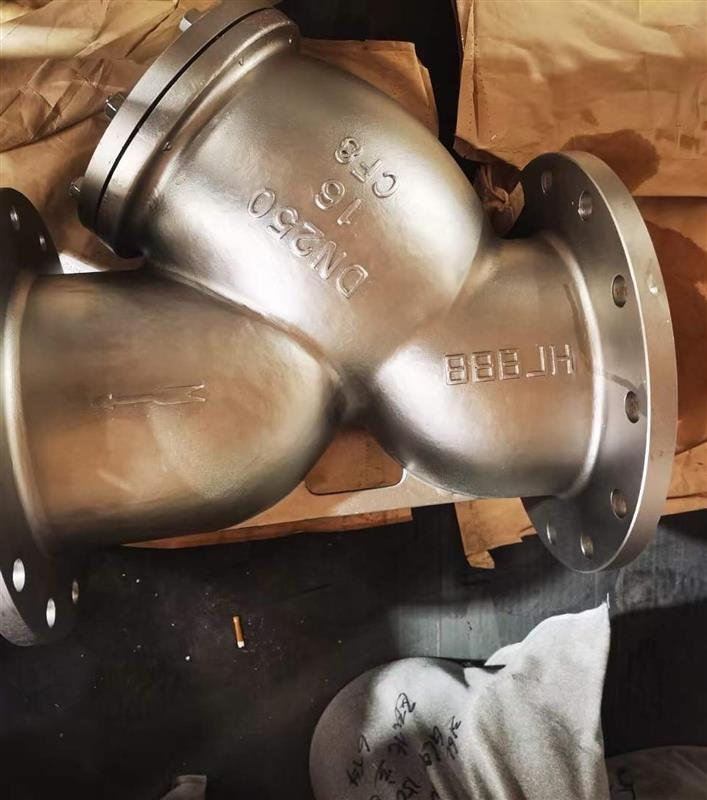Butterfly valves are essential components of numerous industrial systems that manage and isolate flow. Wafer and lug butterfly valves are two common designs among the different types that exist. Though they share similar functions, their structural and functional differences enable them to be applied in different contexts. UAE Valves knows how important it is to choose the right valve type for your operational needs.
The installation, working, construction, advantages, and industrial application of wafer and lug butterfly valves will all come under thorough inspection in this blog.
Butterfly Valve: Meaning
Butterfly valves are one of those quarter-turn rotating valves. They find application in the control, isolation, and shut-off of flows. Butterfly valves consist of a disk anchored on a rotational shaft. A quarter turn opens the valve to allow a flow of fluids, whereas full-closed valving closes off the passage.
Butterfly valves are preferred due to their compactness, light weight, quick operation, and low cost. Wafer and lug types are the most common among the various types.
Wafer Butterfly Valve: What Is It?
To prevent backflow, a wafer butterfly valve is constructed to maintain a seal over a two-way pressure difference. It is mounted between two flanges using long bolts that traverse the entire valve body.
Most notable characteristics are:
- Being affordable and portable.
- Needs the help of the pipeline.
- Ideal for applications with minimal pressure demands.
- Limited to applications where disconnections of pipe are rare.
Lug Butterfly Valve: What Is It?
A lug butterfly valve can be secured to pipeline flanges due to the presence of threaded inserts (lugs) around its body. This allows disconnection of the pipeline on one side independently from the other side.
Key features:
- Heavier-duty and more robust.
- Dead-end services may utilize it.
- For higher pressure ratings, it is suitable.
- Eases the process of disconnecting pipeline sections.
Constructional Differences:
- Body Design
- Wafer Type: Smooth, flat body with no bolt holes protruding.
- Lug Type: Protruding lugs surround the valve body, which are threaded bolt holes.
- Mounting Technique:
- Wafer Type: Bolted between two flanges with long bolts passing through the valve body and both flanges.
- Lug Type: Fitted by securing each flange separately onto the threaded lugs of the valve body.
- Support:
- Wafer Type: Dependent solely on the alignment and support of the piping system.
- Lug Type: Self-supporting design; structural integrity is not reliant on the pipeline.
- Connection Style:
- Wafer Type: Designed for flange connectors which are not threaded.
- Lug Type: Independent, secure connection, suitable for threaded flanges.
- Positioning of the Disc and Shaft:
- Both types: typically feature a central disc attached to a rotating shaft, and the housing surrounding them varies depending on the body shape.
- Use of Gaskets:
- Wafer Type: Requires gaskets between the valve and the flanges on both sides.
- Lug Type: Gaskets are also used, but since they are bolted separately, installation can differ.
Installation Differences:
- It takes sandwiching the wafer butterfly valve between two pipe flanges to install it.
- Secured by bolts that traverse the valve body and flanges.
- Pipelines can only be isolated if the entire line is shut down.
- Threaded lugs are applied to bolt the lug butterfly valve directly onto every flange.
- Allows for the removal of one side of the valve without ruining the other.
- Useful for systems that must isolate specific areas or be routinely maintained.
Functional Differences:
- Isolation Ability: Whereas wafer valves are not available in dead-end service, lug valves are usable in dead-end service, offering better isolation options.
- Flexibility: For growth, maintenance, or repair, lug valves provide more operating flexibility.
3) Support: The pipeline gives all the support for wafer valves. Lug valves can stand by themselves.
Differences between Applications and Use:
Wafer butterfly valve:
- They are best suited for applications where valves are not removed often.
- Suitable for irrigation, HVAC, and water distribution applications.
- Used in low-pressure environments where there are space and financial constraints.
Lug Butterfly Valve:
- Suitable for systems requiring section-wise isolation.
- Suitable in high-pressure environments such as in power generating, oil and gas, and chemical industries.
- Can be a dead-end (end-of-line) service.
Pressure Ratings and Maintenance:
- Pressure Rating: Due to their rugged design and close fitment, lug valves are able to support pressure ratings which are generally greater than the wafer valve’s.
- Maintenance: It is easier with lug valves since you are able to unscrew one pipe side while preserving the other side. The whole system will have to be shut down so that wafer valves can be removed.
Advantages Comparison:
- Wafer Butterfly Valve:
- Compact and light weight.
- Low installation cost.
- Little space is required.
- Simple and quick to install.
- Lug Butterfly Valve:
- Greater flexibility in operation.
- Suitable for dead-end applications.
- Control is enhanced with individual flange connections.
- Ideal for critical systems where valves need frequent maintenance.
Industries Where They Are Used?
Although both kinds are employed in many different industries, their uses differ based on the requirements of the process.
Wafer Butterfly Valve Industries:
- Treatment of water and wastewater
- Systems for preventing fires
- HVAC systems
Lug Butterfly Valve Industries:
- Oil and gas
- Petrochemical facilities
- Maritime industry
- Power plants
- Paper and pulp
Overview of variations:
- Design: Lug has extended bolt lugs, while wafer is flat.
- Installation: The lug is bolted directly, while the wafer slides between the flanges.
- Disconnecting: While lug allows side disconnecting, wafer demands full system shutdown.
- Strength: Structural strength of lug valves is greater.
- Cost: Wafer valves are cheaper.
- Use Case: Lug for sensitive systems; wafer for general utility.
The decision between wafer and lug butterfly valves depends on a range of factors including flexibility in operation, cost consideration, ease of installation, and pressure requirement. Lug valves in high-demand applications are stronger and more flexible than wafer valves, which are cheaper and more compact.
In response to various industrial applications, UAE Valves offers wafer and lug butterfly valves in diverse forms. We can assist you with our technical professionals in finding the correct form of valve according to your system for durability, efficiency, and safety.
UAE Valves is your single-source solution for low-cost, hassle-free valves and reliable service whenever you require an affordable solution for flow control or a very long-lasting system that can handle pressured conditions.





